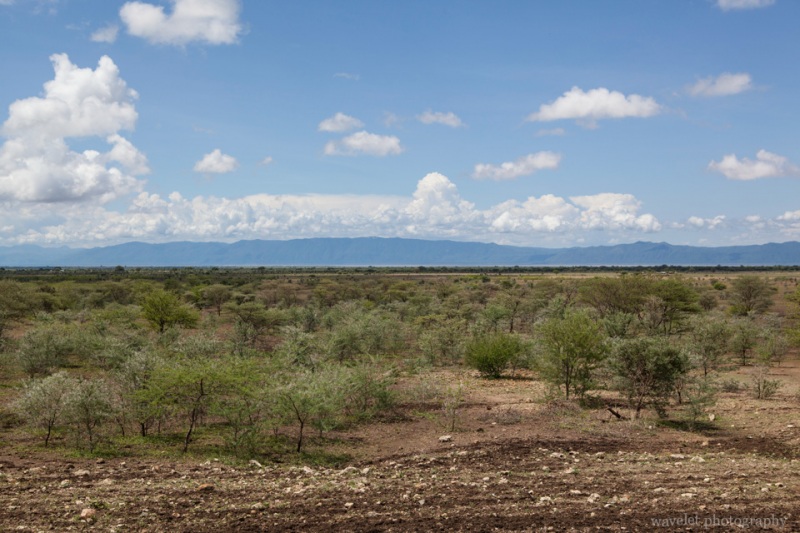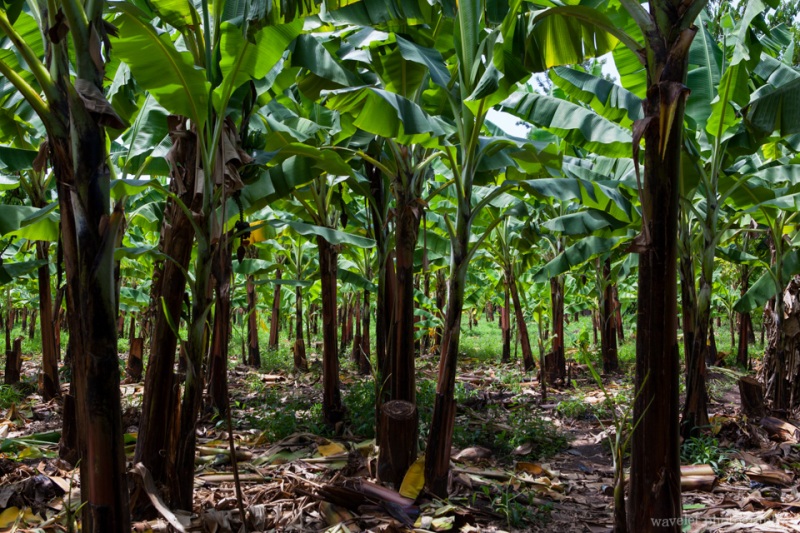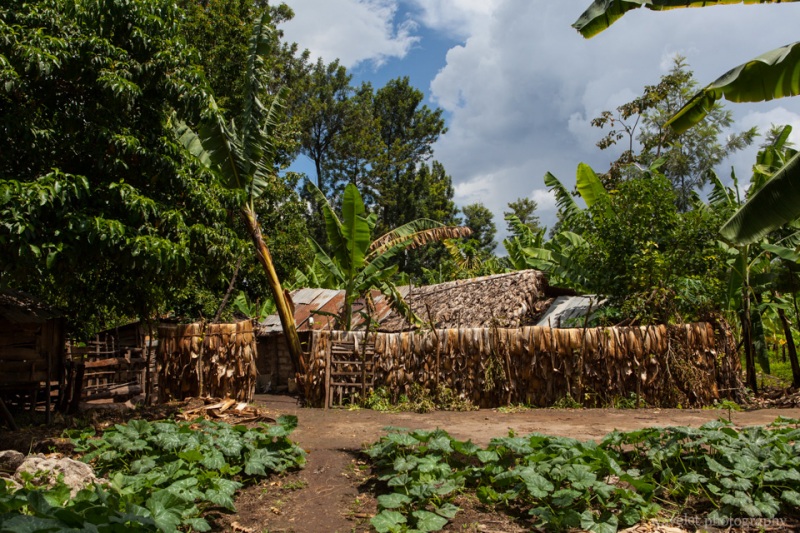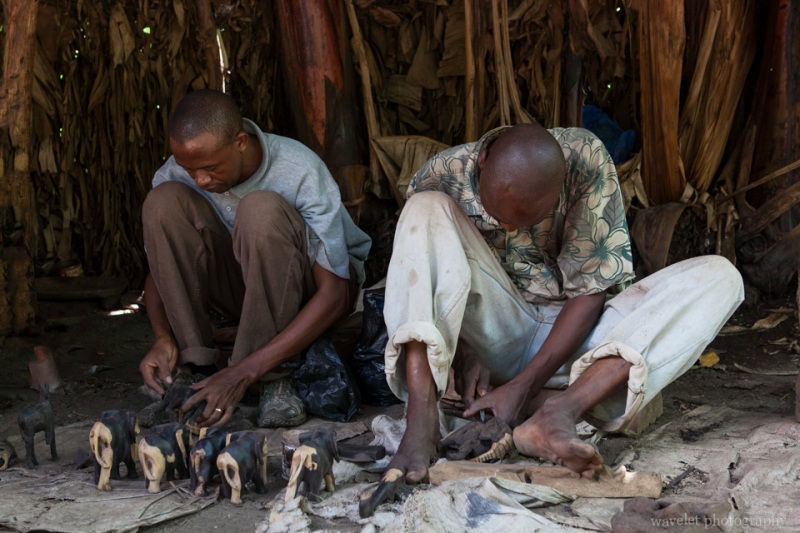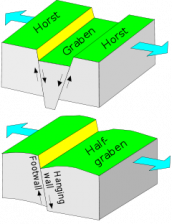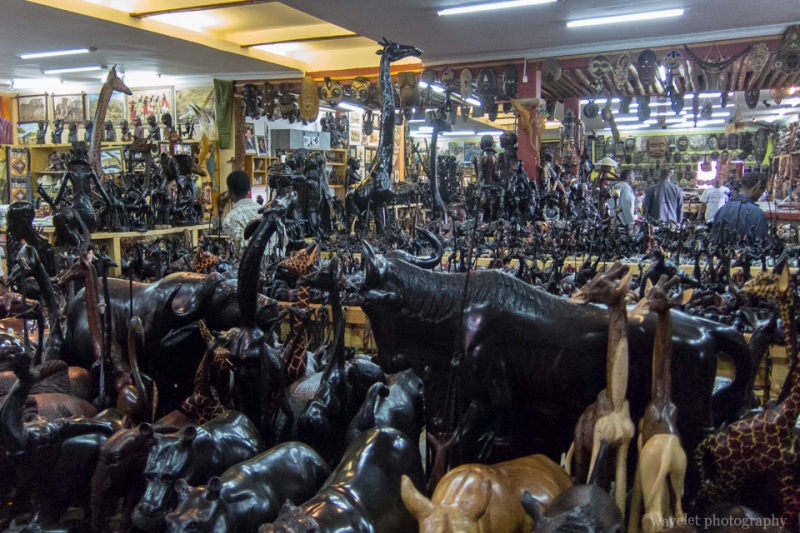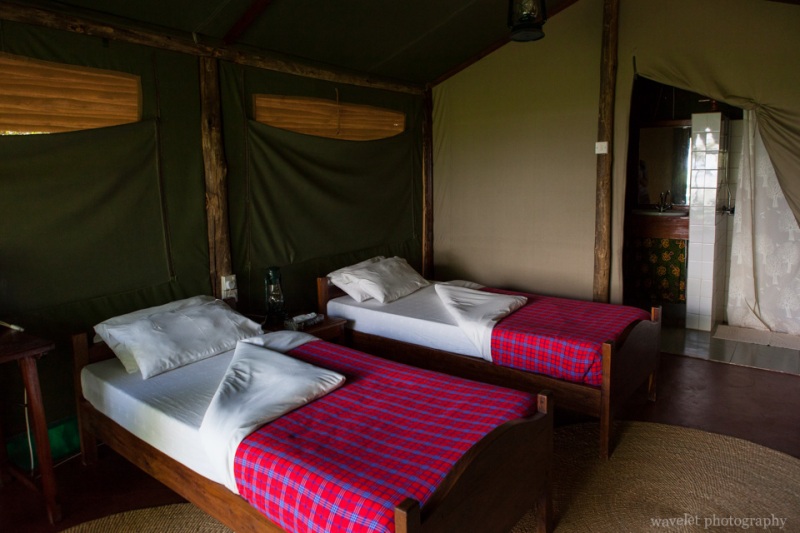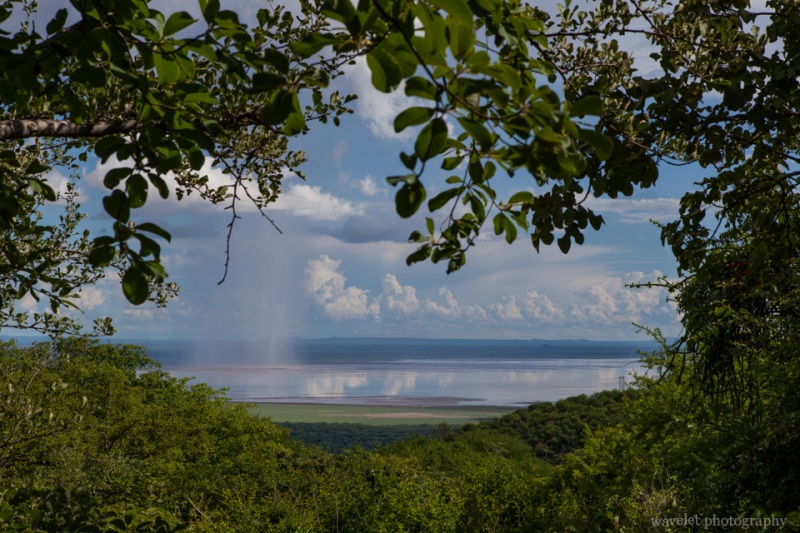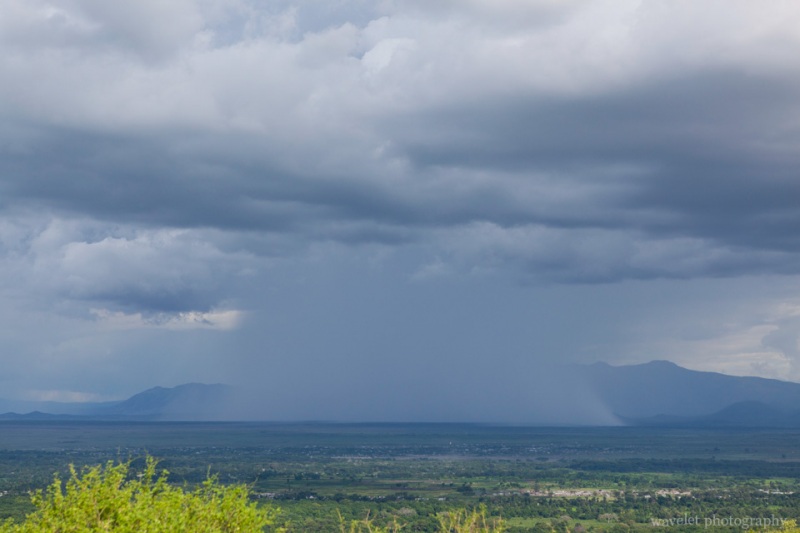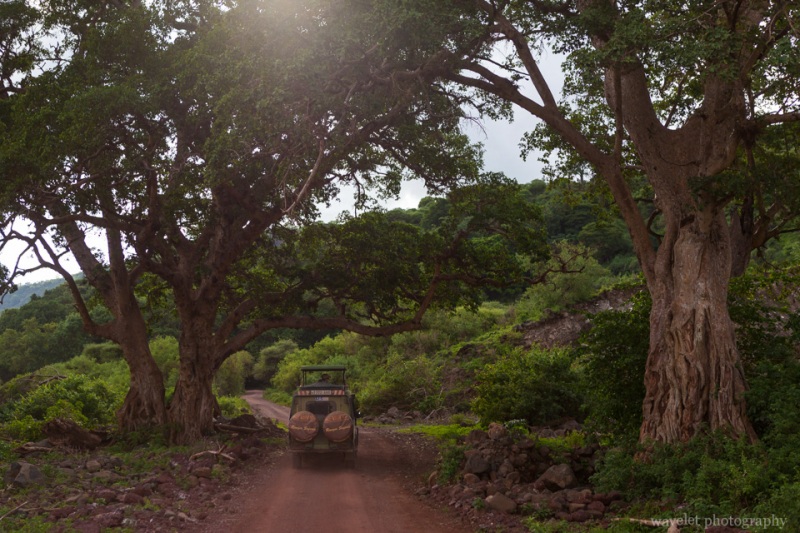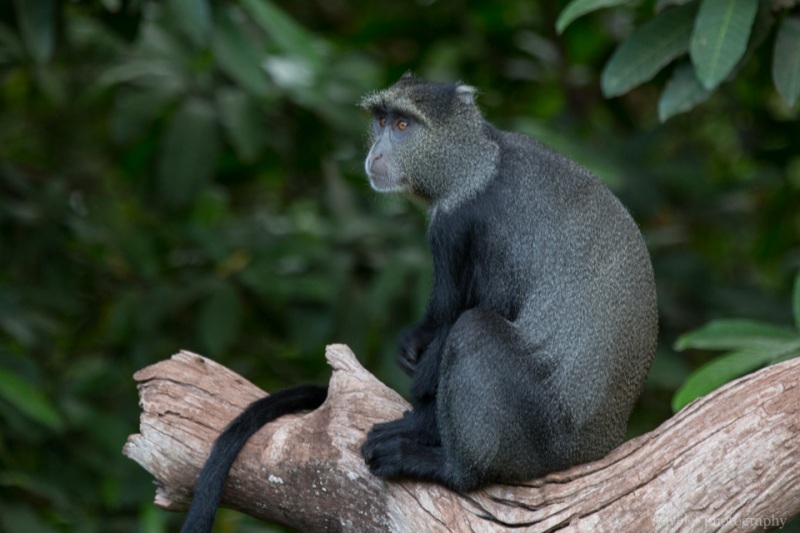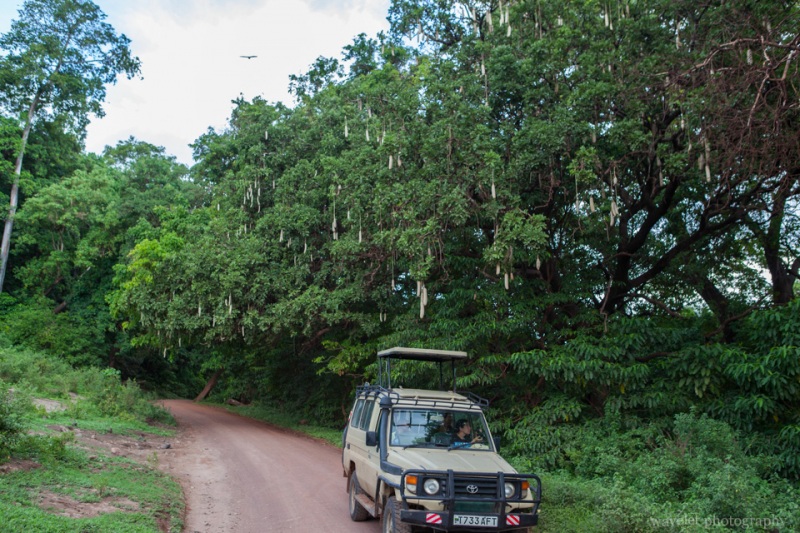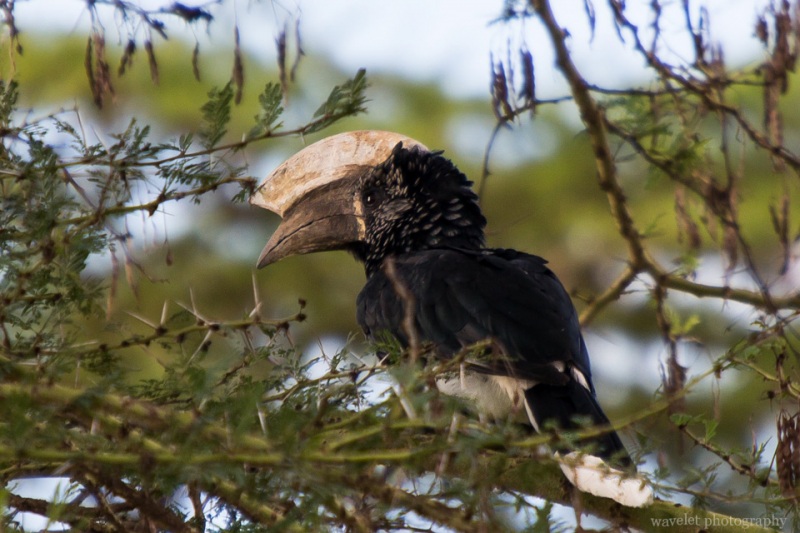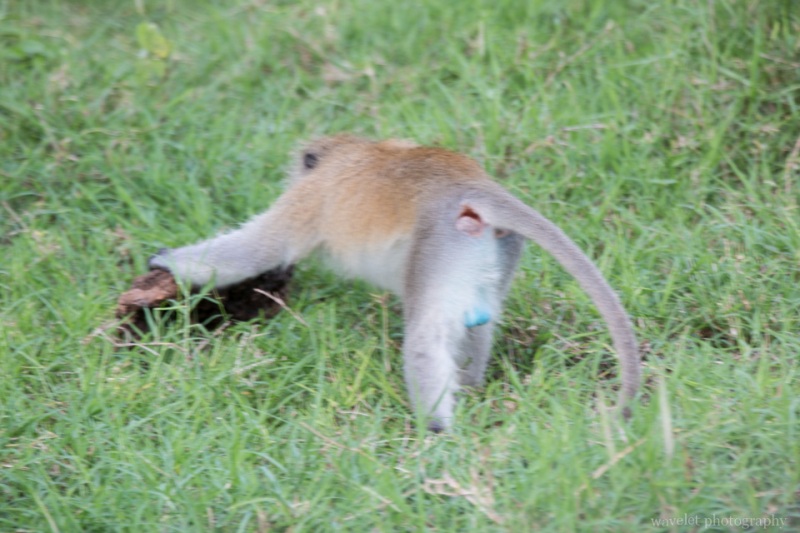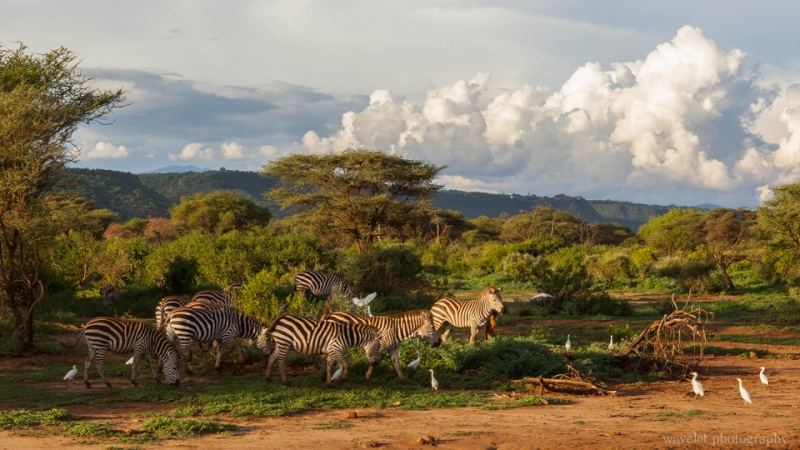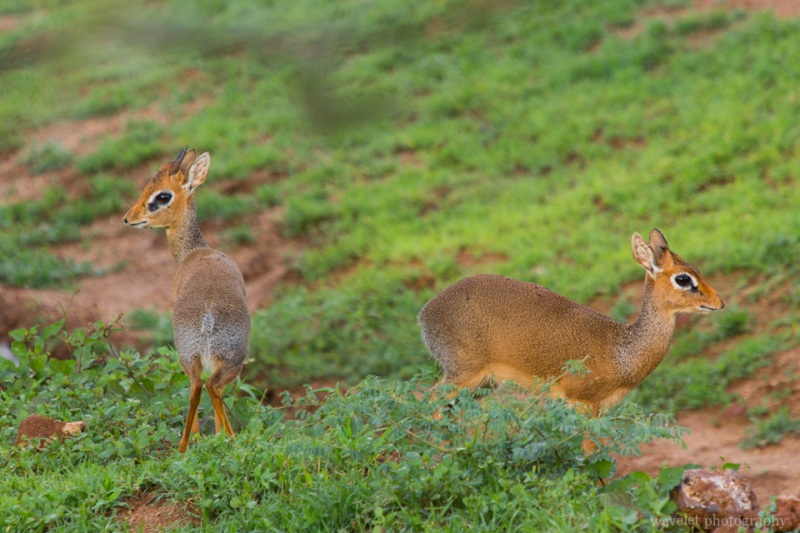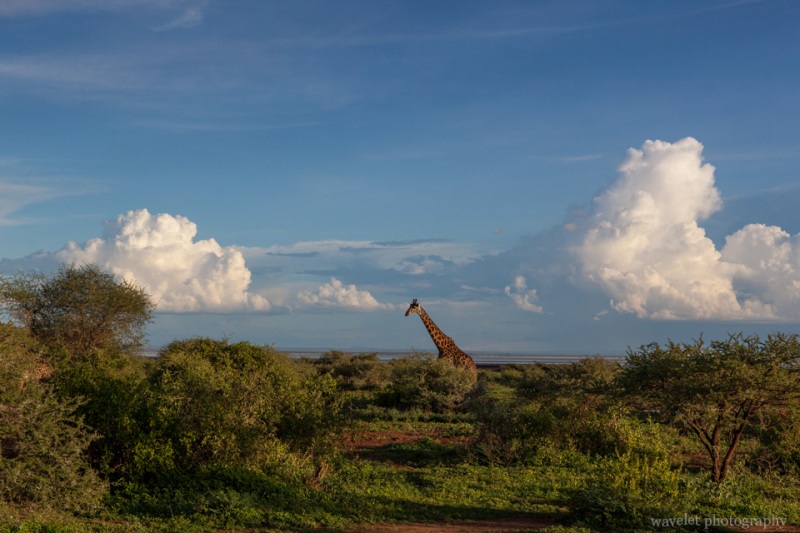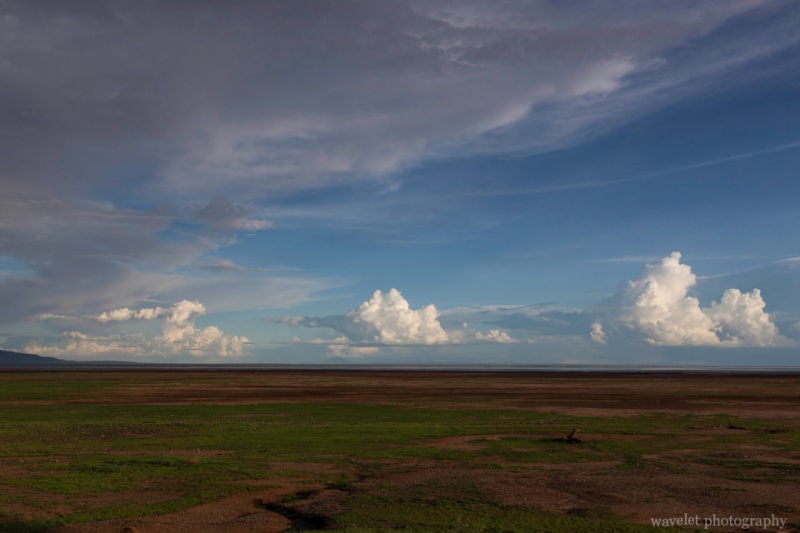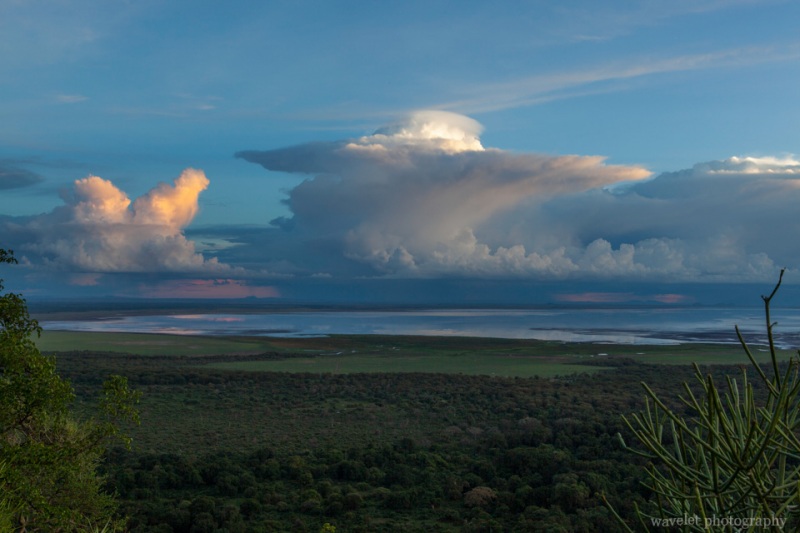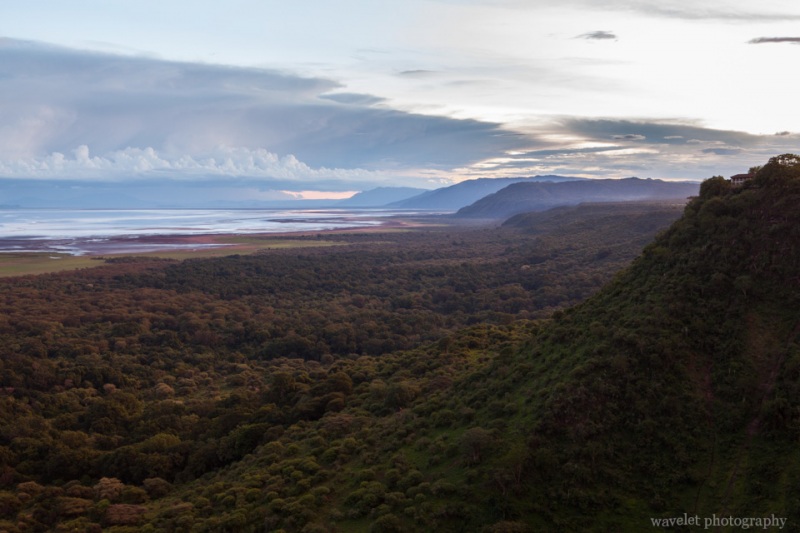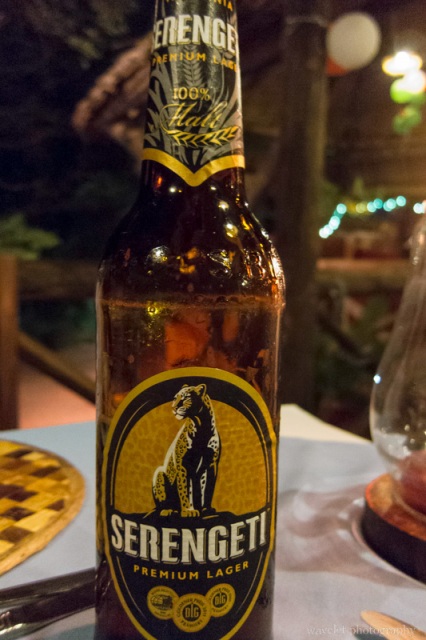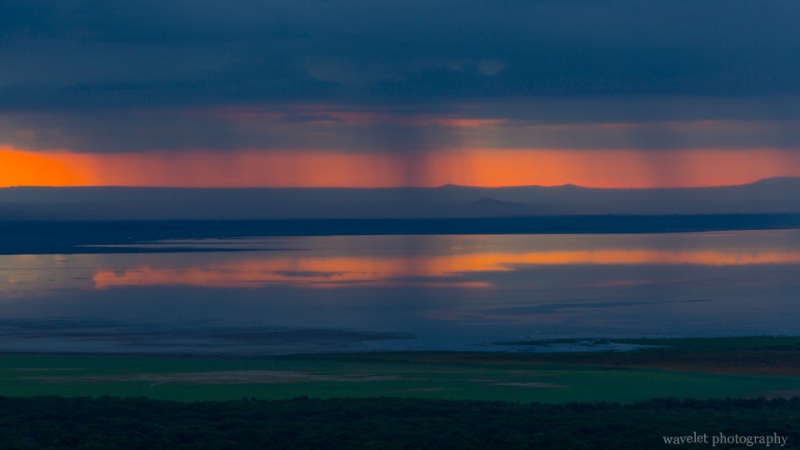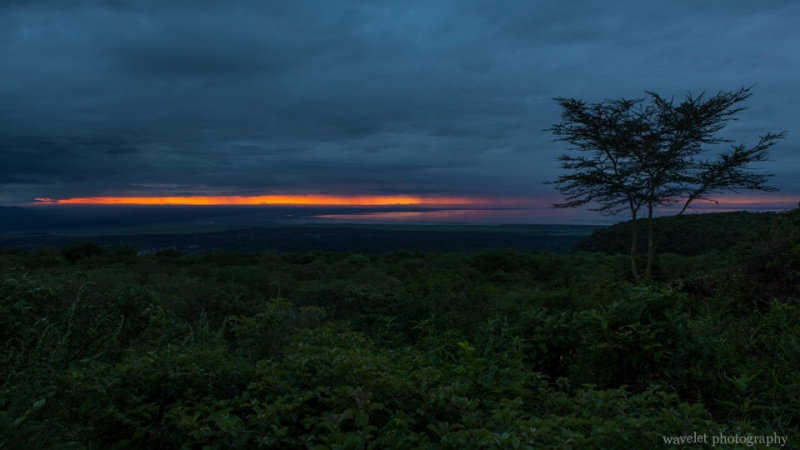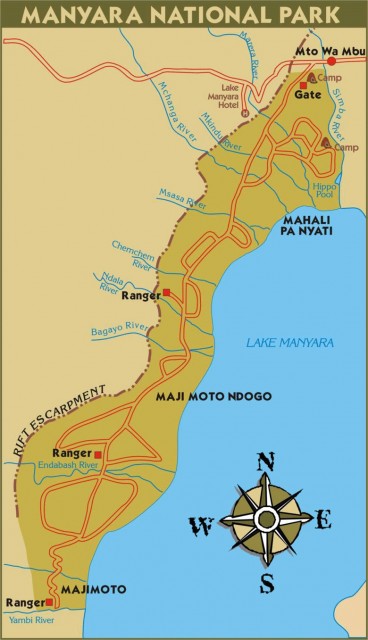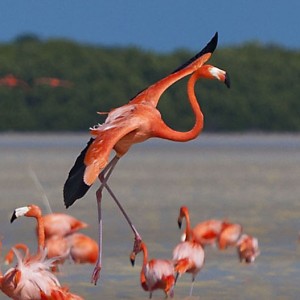2012.12.26We left Tarangire National Park at 10am. Driving 3 miles on dirt road and a couple of miles on paved road to Arusha direction, then we turn left on B144. This is a section of straight high way. The landscape is open and dry, covered with sparsed low bush. The distance between Tarangire and Lake Manyara is not far. From here, we could already see the south part of Lake Manyara.
After about an hour, we entered a populated area, Mto wa Mbu, which borders Lake Manyara National Park to the southeastern side. Justin took us to a nearby village. Crossing a banana field, we saw several farmhouses and thatched shacks. A shack was used to display handcraft and woodwork. Some locals were working on the new items, carving and polishing the wood sculptures.
Tanzania is renowned for original and fanciful woodcarvings. They are also popular tourist souvenirs. One of men first gave us a short talk, telling the story about why their tribe moved from Mozambique and how they created these woodwork based on their dreams and their everyday lives. We were much more impressed by the way he talked than the story he was telling. He spoke slowly and calmly, with clear logic and great confidence – it’s a very persuasive sales pitch. He claimed the carvings were made by Ebony wood, but Achmed told us before we left Arusha, “whoever said it’s Ebony, it’s not”. We bought some paintings made by banana leaves.
We decided to check into the lodge before going to the Lake Manyara National Park. It’s hot at noon and animals are not active anyway. We passed by the park’s entrance and started climbing a steep hill –
we were actually escalading the western wall of the East African Rift Valley. Unlike the river valley or glacier valley, the rift valley is not created by erosion but by tectonic plates pulling apart from each other. Horsts and Grabens are often produced along the parallel faults. In the section of Rift Valley, the geological structure appears to be a half-graben, where the valley’s western wall rises 2000 feet high on one side and a flat lowland on the other side extended to as far as eye can see. Lake Manyara lies right at the foot of the wall.There are several souvenir stores along the road. Tingatinga style paintings were displayed outside the store; inside, thousands woodcraft items, from two-inch-long statues to full-sized monkeys and buffaloes, were packed on the shelves. We picked three foot-long figures and bargained for about 40% discount of what they originally asked for. Even at this price, the store could easily worth hundred thousand dollars.
After lunch, we checked into our hotel, Kirurumu Manyara Lodge. The lodge sits on the rim of the Rift Valley. From its entrance, the paved alleys split into branches. Each branch leads to a tent cabin surrounded by woods, yet every tent has a view of Lake Manyara.
At 4pm, we climbed down the Rift Valley to the park. Once we entered the park, the dry and hot air was suddenly behind us. The temperature seemed to drop several degree at least.
Because of abundant water source, unlike Tanragire National Park, most of Lake Manyara National Park is covered by lush forest. The game drive road winds through the jungle. Not far from the entrance, at the northeast end of the park, there is a small pool called “Hippo Pool”. We could only see one hippo from far away, but Justin assured us that we would see plenty of them in Serengeti. Along the road, baboon troops haunt the dense woods or lounge on the open ground. The park is also a good place to view birds and eagles.
Game drive road in Lake Manyara National Park is a loop. Contrasting to the forest in the north, the southeast of the park is the grassy floodplain. More animals were visible.
We retired to our lodge after spending about two hours in the park. On our way back, I took several pictures of sunset at a vista point by the rim of the Rift Valley.
The next morning, I got up at 6am. Next to the dinner area, the platform in front of the lodge’s bar has a great view of Lake Manyara. Just like the previous day, the sky was covered by the heavy cloud; also like the previous day, the cloud opened a long and narrow gap at the horizon. If the sunrise at Tarangire was splendid, the sunrise over Lake Manyara had a sense of mystery.
